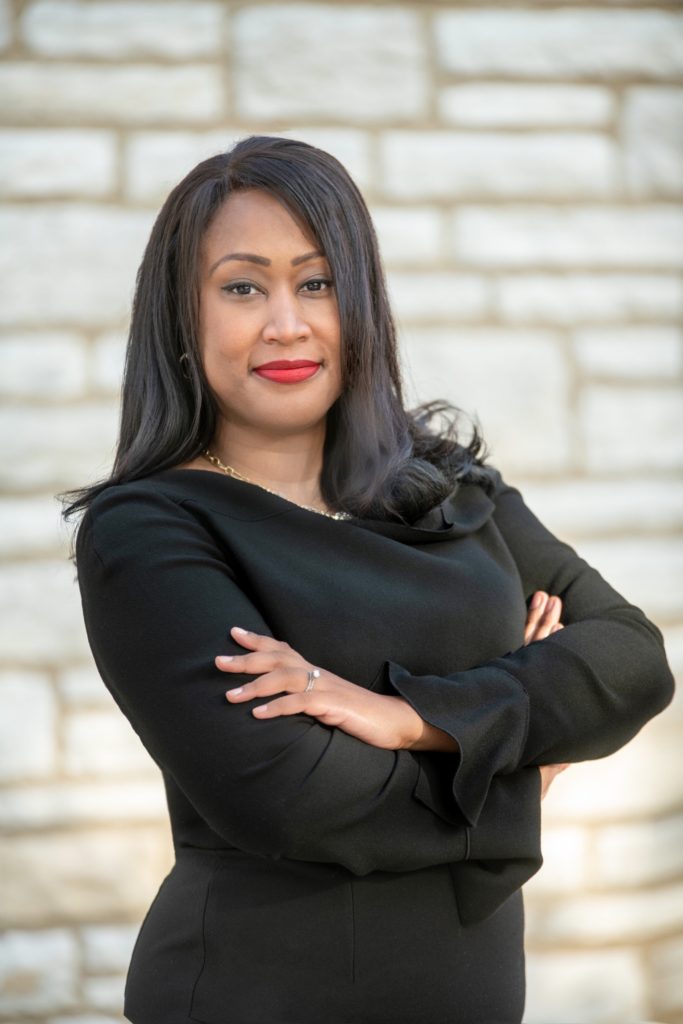
With a passion for bringing diversity and inclusion to the forefront in the St. Louis region – and beyond – Amanda Shields recently began her newest leadership role at Missouri Botanical Garden.
The organization’s first diversity and inclusion officer, Shields said that true inclusion and belonging comes when people feel that they can show up as their true selves, and not only be accepted – but embraced.
“This means that a critical tipping point of all of the people within the community need to have awareness and a level of maturity in identifying potential bias and accepting differences,” she said. “Ensuring that this base is in place is a strong foundation for any other inclusion efforts.”
Shields is no stranger to fostering these ideals, joining the garden with 20 years of experience as a senior leader. Recently, she led diversity and inclusion initiatives at Nestlé, which included community outreach for the information technology organization across the U.S. and Canada. She previously led her own company, Shields Consulting, in partnerships with global groups across a variety of industries on organization transformation strategy and initiatives, and has a proven ability for building effective teams and partnerships to facilitate cultural change.
She recently shared with Gazelle her plans for her new leadership position and her feelings about inclusion.
What are some of the steps you are taking to help set the vision for the future community? The first steps that I’m taking are to spend time speaking to as many of the garden’s key stakeholders as possible to absorb knowledge, understand their perspectives, and get an authentic sense of the culture. There’s no one-size-fits-all solution for inclusion, so it’s incredibly important to get a sense of these things before building a strategy and goals.
As a leader, how can you help set the tone for the organization? And what can other community leaders do? Commitment and support for diversity, equity and inclusion within an organization have to come from the top. Seeing inclusive behaviors being modeled and championed by senior leaders can make a huge difference for others feeling empowered to do so, as well. Additionally, as a leader, the biggest impact that you can make is holding others in your organization accountable and driving results around diversity and inclusion, just as you would for any other key objective, ensuring that time and resources are aligned to actionable plans to drive those results.
Finally, communicating and being transparent about your progress on the goals you set is key. Ultimately, having a diverse and inclusive organization has been shown to increase innovation and creativity, mitigate risks, and positively impact the financial results for organizations. So, as a leader, you have the opportunity and the responsibility to treat it as the key organizational driver that it is.
What are some inclusion initiatives that other leaders can employ? Since there truly is no one-size-fits-all solution to inclusion, a big part of the answer to that depends on what will resonate within their organization. Some key elements that can be translated to fit many organizations include fostering a culture where people feel empowered and comfortable to call out bias and have meaningful conversations, as well as carving out spaces for employees from diverse communities to lead and drive the programming, events and conversations around diversity and inclusion that are meaningful to them (i.e., employee resource groups, affinity groups, diversity and inclusion councils, etc.).
Are you originally from St. Louis? Born and raised in St. Louis, and proud to give the answer to the age-old question – what high school did you attend? – Hazelwood East.
What made you want to stay in the area? St. Louis is a fantastic city that has so much to offer! From so many world-class cultural institutions, like the Missouri Botanical Garden, the Saint Louis Zoo and our museums, to a vibrant theater and music community, to our awesome sports teams, to an exploding food and restaurant scene that is being recognized as one of the best in the nation, St. Louis truly has something for everyone. I’ve traveled a great deal, and though I have many cities that I love to spend time in, I can’t think of anywhere I’d rather raise my family and call home than St. Louis!
Shields earned a Bachelor of Arts degree in economics at the University of Missouri-St. Louis, and a Master of Arts in human resources development from Webster University. She is a member of Delta Sigma Theta Sorority Inc. and serves on the board of directors for Saint Louis Story Stitchers.





